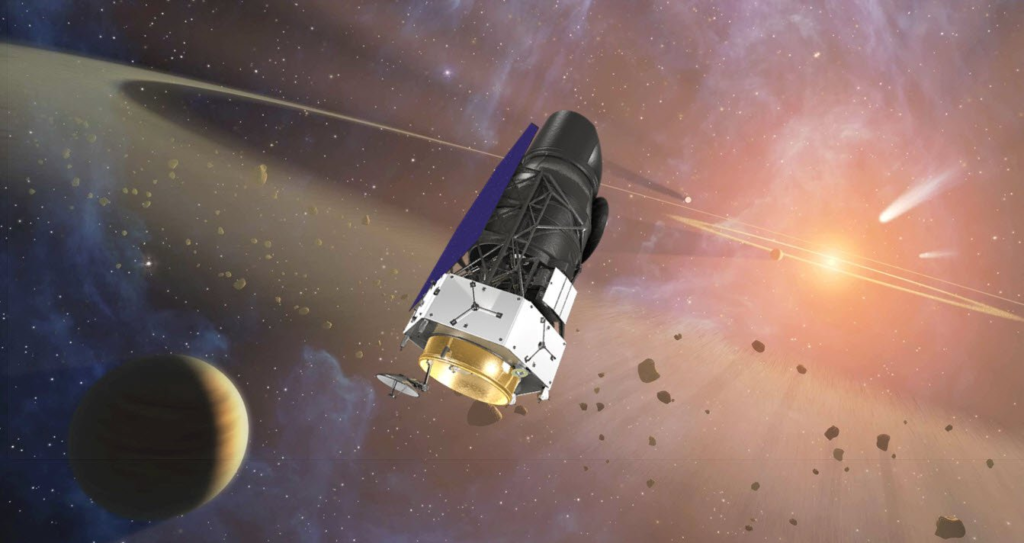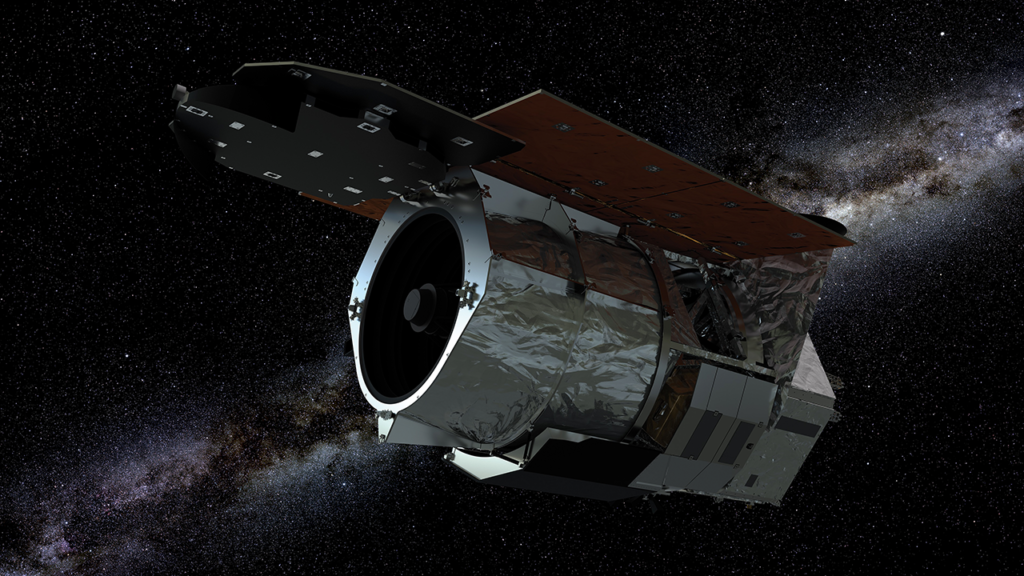
A Closer Look At NASA’s Next Big Space Telescope
Not long ago, many of us watched the James Webb Space Telescope make history after its long journey to L2 and release of different fascinating images. While that project alone took billions of dollars and decades of work, NASA is already onto the next observatory expected to contribute additional information and provide unique discoveries.
Specifically, the Roman Space Telescope is meant to function as Hubble’s wide-eyed cousin. While just as sensitive as Hubble’s cameras, the Roman Space Telescope’s 300-megapixel Wide Field Instrument will image a sky area 100 times larger. Combine the telescope’s power with its modern day components, and destination of L2, and NASA is expected to learn much more about the Universe we live in.
For example, the agency is already confident in this telescope’s ability to learn more about the Universe’s growth and dark matter. Hubble managed to provide some of the clearest and most thorough images ever taken in its time. To put this telescope in perspective, a single Roman image will hold the equivalent detail of 100 pictures from Hubble. Here I will go more in-depth into the telescope design, what it will study, and more.
Telescope Design

Originally named the Wide Field Infrared Survey Telescope, the Nancy Grace Roman Space Telescope is a next-generation observatory that will peer through dust and across vast stretches of space and time to survey the infrared universe. The mission is expected to help us solve some of the most profound mysteries in astrophysics, such as how the universe has evolved, its ultimate fate, and whether we are alone.
To make Roman’s sensitive measurements possible, the telescope will observe from a vantage point about 930,000 miles (1.5 million km) away from Earth in the direction opposite the Sun. At this special place in space, called the second Sun-Earth Lagrange point, or L2, gravitational forces balance to keep objects in steady orbits with very little assistance. Roman’s barrel-like shape will help block out unwanted light from the Sun, Earth, and Moon, and the spacecraft’s distant location will help keep the instruments cool. The thermal stability of an observatory at L2 will provide a ten-fold improvement beyond Hubble in much of the data Roman will gather.
The amount of detail these observations will reveal is directly related to the size of the telescope’s mirror, since a larger surface gathers more light. Roman’s primary mirror is 7.9 feet (2.4 meters) across. While it’s the same size as the Hubble Space Telescope’s main mirror, it is less than one-fourth the weight. Roman’s mirror weighs only 410 pounds (186 kilograms) thanks to major improvements in technology. The primary mirror, in concert with other optics, will send light to Roman’s two science instruments – the Wide Field Instrument and Coronagraph. These two instruments allow the telescope to see and capture more than ever before.
Looking at the Wide Field Instrument first, which is a 300-megapixel infrared camera that will allow scientists to explore the cosmos all the way from the edge of our solar system to the farthest reaches of space. Peering far across the universe is like looking back in time to when the universe was much younger. Seeing the universe in its early stages will help unravel how it has expanded throughout its history, which will hint at how it may continue to evolve. Each Roman image will capture a patch of the sky bigger than the apparent size of a full Moon. Hubble’s infrared images, taken with its Wide Field Camera 3, are about 200 times smaller. Even Hubble’s widest exposures, taken with the Advanced Camera for Surveys, are nearly 100 times smaller. Over the first five years of observations, Roman will image over 50 times as much sky as Hubble covered in its first 30 years.
In terms of the Coronagraph Instrument on the Nancy Grace Roman Space Telescope, this technology allows astronomers to directly image planets in orbit around other stars by greatly reducing the glare from the host star. It will be far more powerful than any other coronagraph ever flown, capable of seeing planets that are almost a billion times fainter than their star. Results from the Roman Coronagraph, which is being built at NASA’s Jet Propulsion Laboratory, will demonstrate the technology that will enable future missions to observe and characterize rocky planets in the habitable zone of their star – the range of orbital distances where liquid water could potentially exist on a planet’s surface. Studying the physical properties of exoplanets that are more similar to Earth will take us a step closer to discovering habitable planets and possibly learning whether we are alone in the cosmos.
More specifically, the Roman Space Telescope can use a light-bending phenomenon to study planets beyond our solar system, known as exoplanets. In a process called microlensing, a foreground star in our galaxy acts as the lens. When its motion randomly aligns with a distant background star, the lens magnifies, brightens, and distorts the background star. As the lensing star drifts along in its orbit around the galaxy and the alignment shifts, so does the apparent brightness of the star. The precise pattern of these changes can reveal planets orbiting the lensing star because the planets themselves serve as miniature gravitational lenses. Such alignments must be precise and last only hours. These are just some of the unique features that the Roman Space Telescope has to offer.
Dark Matter & More

Now that we know more about the telescope itself and some of its components, we can take a look at what scientists are most excited to observe. NASA’s Nancy Grace Roman Space Telescope will study wispy streams of stars that extend far beyond the apparent edges of many galaxies. Missions like the Hubble and James Webb space telescopes would have to patch together hundreds of small images to see these structures around nearby galaxies in full. Roman will do so in a single snapshot. Astronomers will use these observations to explore how galaxies grow and the nature of dark matter. “Halos are mostly made from stars that were stripped away from other galaxies,” said Tjitske Starkenburg, a postdoctoral fellow at Northwestern University in Evanston, Illinois, who examined Roman’s potential in this area. “Roman’s wide, deep images will be sharp enough that we can resolve individual stars in other galaxies’ halos, making it possible to study stellar streams in a large number of galaxies for the first time.”
Simulations support the theory that galaxies grow in part by gobbling up smaller groups of stars. A dwarf galaxy captured into orbit by a larger one becomes distorted by gravity. Its stars drizzle out, tracing arcs and loops around the larger galaxy until they ultimately become its newest members. “As individual stars leak out of the dwarf galaxy and fall into the more massive one, they form long, thin streams that remain intact for billions of years,” said Sarah Pearson, a Hubble postdoctoral fellow at New York University in New York City and the lead author of a separate study about the mission’s projected observations in this area. “So stellar streams hold secrets from the past and can illuminate billions of years of evolution.” Astronomers have caught this cannibalistic process in the act using telescopes like ESA’s (European Space Agency’s) Gaia satellite, which is fine-tuned to measure the positions and motions of stars in our Milky Way galaxy. Roman will extend these observations by making similar measurements of stars in both the Milky Way and other galaxies.
The Milky Way is home to at least 70 stellar streams, meaning it has likely eaten at least 70 dwarf galaxies or globular star clusters – groups of hundreds of thousands of gravitationally bound stars. Roman’s Milky Way images could allow astronomers to string together snapshots in time to show stars’ movement. That will help us learn about what dark matter – invisible matter that we can only detect via its gravitational effects on visible objects – is made of. One theory suggests dark matter is “cold,” or made up of heavy, sluggish particles. If so, it should clump together within galaxy halos, which would disturb stellar streams in ways Roman could see. By either detecting or ruling out these distortions, Roman could narrow down the candidates for what dark matter could be made of. Astronomers are also looking forward to studying stellar streams in several of the Milky Way’s neighboring galaxies. They aren’t well studied in other galaxies because they’re so faint and far away. They’re also so vast that they can wrap around an entire galaxy. It takes an unrivaled panoramic view like Roman’s to capture images that are both large and detailed enough to see them. In only a few years time, Roman could help discover more about the Universe and what to expect in the future.
Conclusion
NASA is constantly working on new and ambitious projects meant to increase access to space and learn more about what’s beyond Earth. Right now the agency is working on the Roman Space Telescope and is expected to launch it around 2026. We will have to wait and see how it progresses and the impact it has on the space industry.